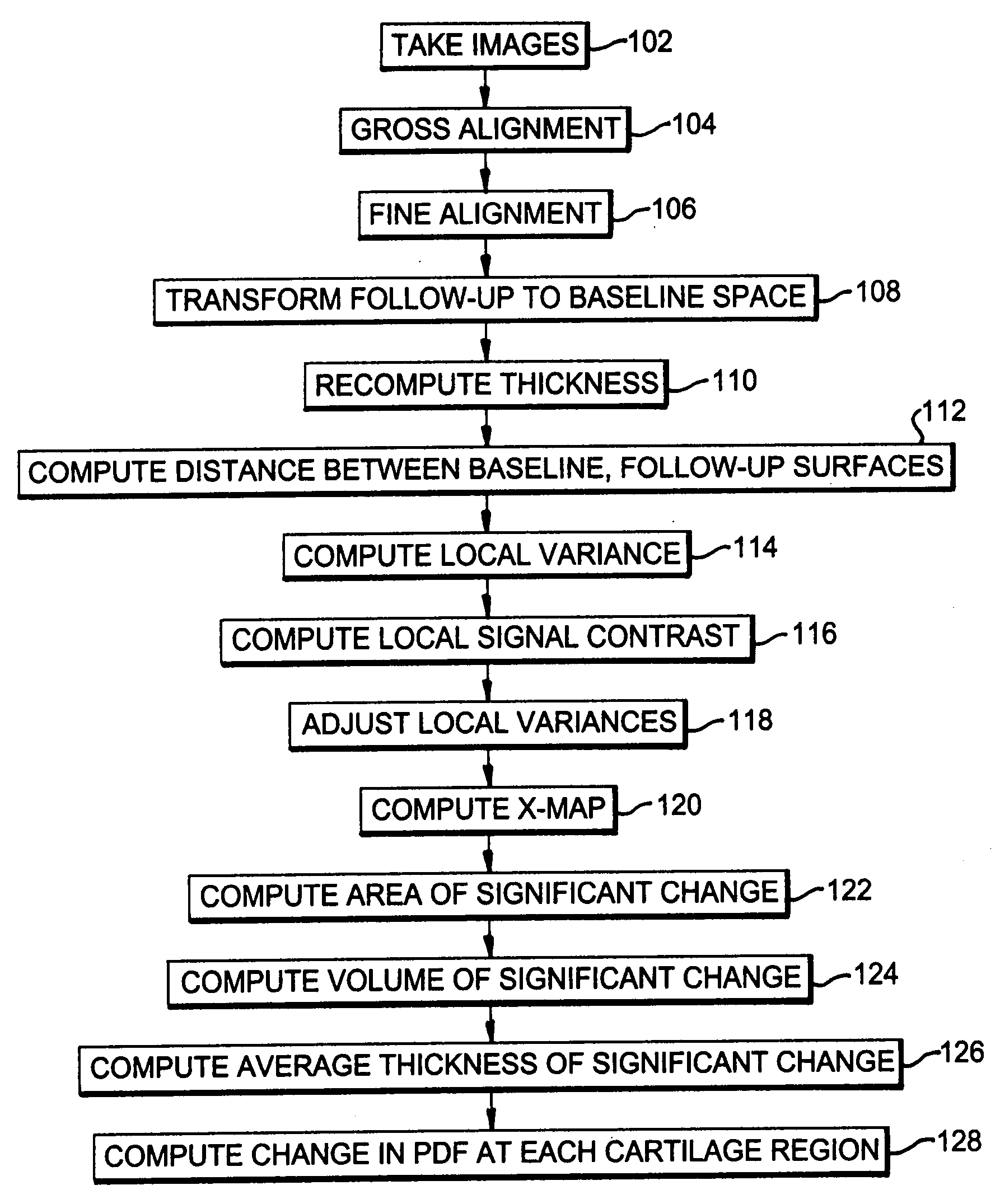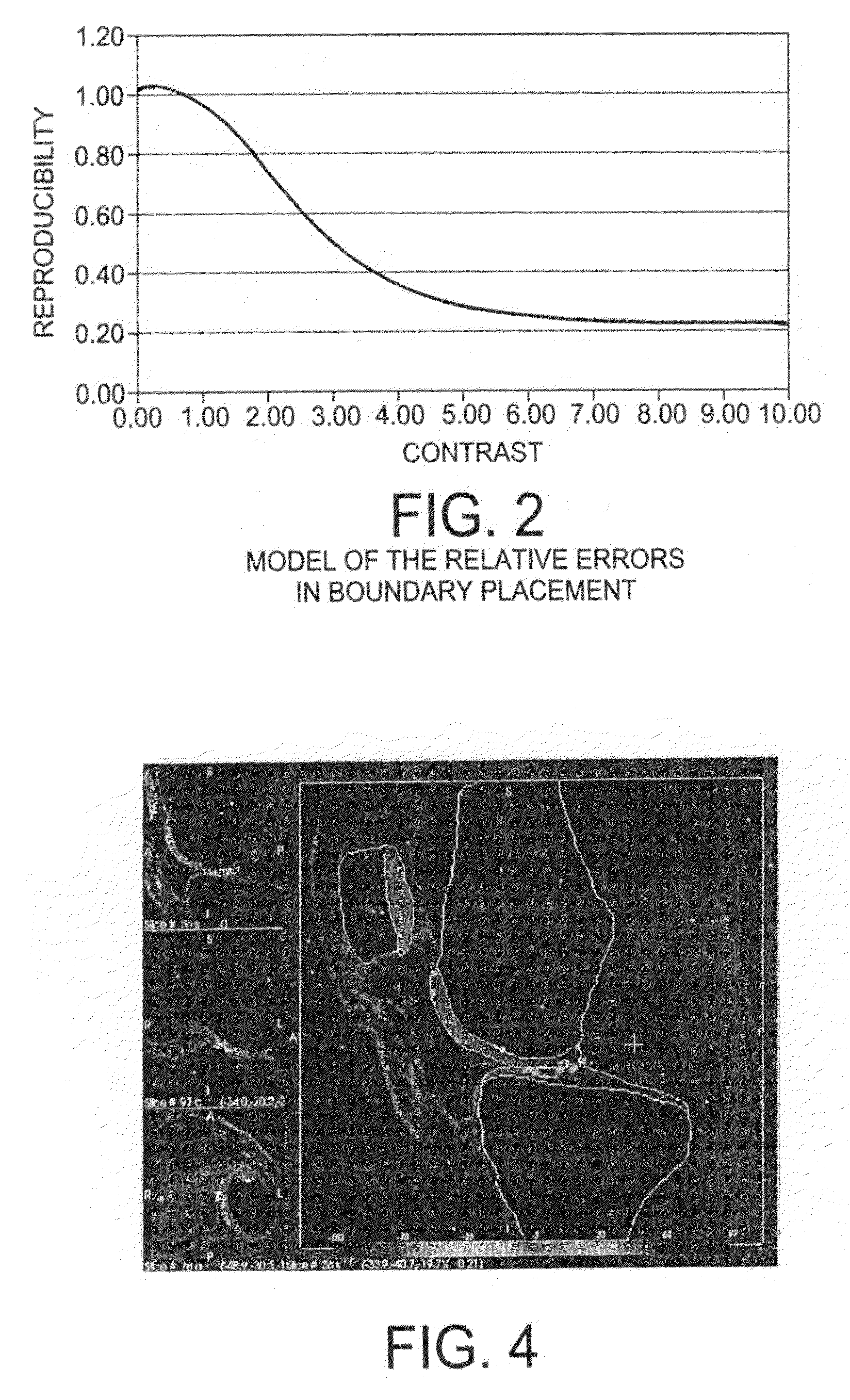Structural quantification of cartilage changes using statistical parametric mapping
a structural and parametric mapping technology, applied in image analysis, medical science, image enhancement, etc., can solve the problems of small percentage of cartilage tissue, insensitive to focal morphological changes, and large effort placed on accurate quantification of cartilage morphological parameters, so as to reduce total system variability, improve system ability to detect focal changes, and minimal cartilage morphology changes
- Summary
- Abstract
- Description
- Claims
- Application Information
AI Technical Summary
Benefits of technology
Problems solved by technology
Method used
Image
Examples
Embodiment Construction
[0022]A preferred embodiment of the present invention will be set forth in detail with reference to the drawings, in which like reference numerals refer to like elements or steps throughout.
[0023]The data set used for the evaluation of the method consisted of a pair of scans from nine healthy volunteers between 31 and 71 years old (mean age of 44), five female and four male, with no clinical evidence of OA. One knee of each of the nine volunteers was scanned using a GE Sigma 1.5 T scanner (GE, Milwaukee, Wis.) at two time points: baseline scan and the one year follow-up. All volunteers consented to the study protocol which was previously approved by the Institutional Research Subjects Review Board. Two sets of images were acquired for each knee: first a sagittal 3D SPGR fat saturated sequence with a TR of 39, TE of 7.0 ms, Nex 1, Flip angle of 20°, and a 256 by 256 matrix with a 14.0 cm field of view. Second, a sagittal 3D GRE image with a TR of 29, TE of 15.0 sec, Nex 1, Flip angle...
PUM
 Login to View More
Login to View More Abstract
Description
Claims
Application Information
 Login to View More
Login to View More - R&D
- Intellectual Property
- Life Sciences
- Materials
- Tech Scout
- Unparalleled Data Quality
- Higher Quality Content
- 60% Fewer Hallucinations
Browse by: Latest US Patents, China's latest patents, Technical Efficacy Thesaurus, Application Domain, Technology Topic, Popular Technical Reports.
© 2025 PatSnap. All rights reserved.Legal|Privacy policy|Modern Slavery Act Transparency Statement|Sitemap|About US| Contact US: help@patsnap.com



